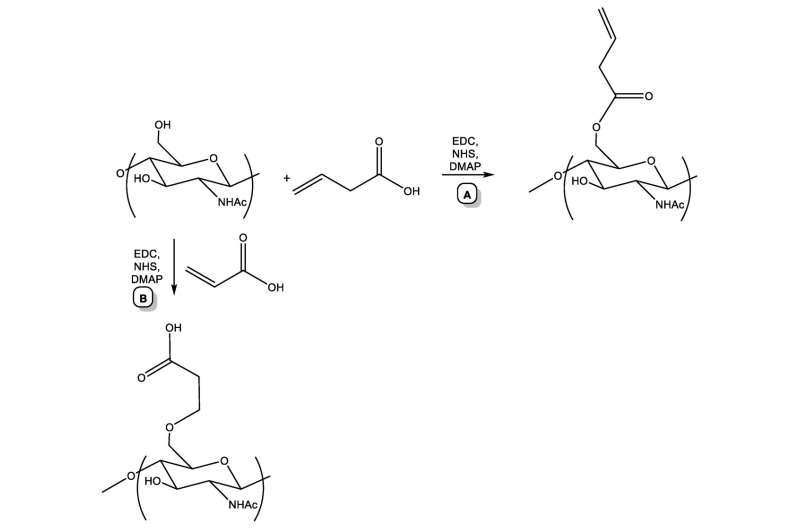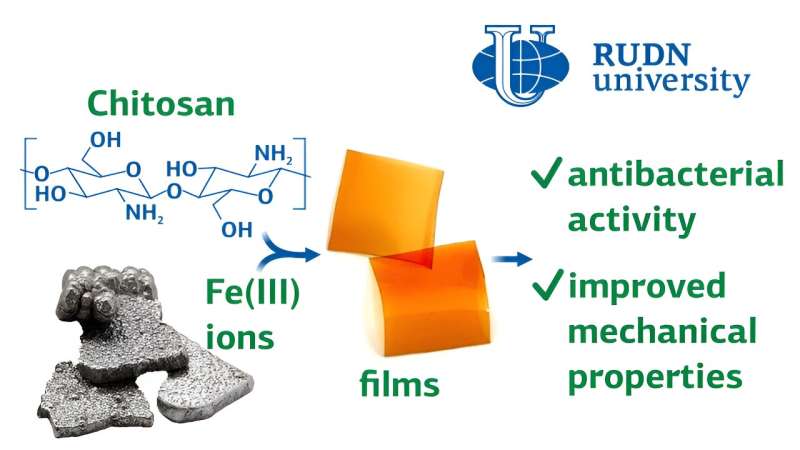This article has been reviewed according to Science X's editorial process and policies. Editors have highlighted the following attributes while ensuring the content's credibility:
fact-checked
proofread
Chemists make antibacterial films more effective with iron

RUDN University chemists have improved the effectiveness of antibacterial chitosan films used in medicine and the food industry, by adding iron and a new chitin derivative to chitin nanoparticles. The results were published in the journal BioTech.
Antibacterial films are used in medicine, for example, for healing wounds and burns or as drug carriers. In addition, they are used to make food packaging to extend shelf life. One of the most commonly used materials for making such films is chitosan. It is a natural, harmless polymer usually obtained from crab shells. Chitosan itself has antibacterial properties, but there is room for enhancement with additives. The RUDN University chemists and colleagues from Belarus discovered that iron-based nanoparticles can be such additives.
"Chitosan has a special place among polymers due to its unique environmental, biological, and chemical properties. The environmental advantage of chitosan is biodegradabiilty. This natural polymer completely and fairly quickly decomposes in soil or water. From a chemical point of view, chitosan is a linear polymer. The free amino group provides ample opportunities for its chemical modification," said Andrey Kritchenkov, Ph.D., Department of Inorganic Chemistry, RUDN University.
The researchers obtained chitosan nanoparticles with iron in different concentrations from 2% to 15%. The antibacterial activity of the resulting films was tested in vitro on gram-negative Escherichia coli and gram-positive Staphylococcus aureus. The main parameter in such measurements is the diameter of the suppression area where the growth and reproduction of bacteria stop.

The team has established the optimal concentration of iron-containing nanoparticles to be 10%. The suppression zone for Staphylococcus aureus at this concentration is 16.8 mm, and for E. coli is 11.2 mm. The pure chitosan film has it at 12.7 and 9.2 mm, respectively. During the study, chemists also obtained a new water-soluble derivative of chitin. By adding it to chitosan with 10% iron, the mechanical and antibacterial properties of the film become even more pronounced. The zone of suppression of staphylococcus grows to 19.6 mm, and E. coli to 14.2 mm.
"We have developed new chitosan-based films reinforced with iron in different concentrations. Iron nanoparticles improved both the mechanical and antibacterial properties of the films. In addition, we have obtained a new chitin derivative that further improves mechanical and antimicrobial properties. In addition to this, we confirmed that the key mechanism of the antibacterial action of films is the destruction of bacterial cell membranes," said Anton Egorov, research intern at RUDN University.
More information: Omar M. Khubiev et al, Novel Highly Efficient Antibacterial Chitosan-Based Films, BioTech (2023). DOI: 10.3390/biotech12030050
Provided by Russian Foundation for Basic Research





















